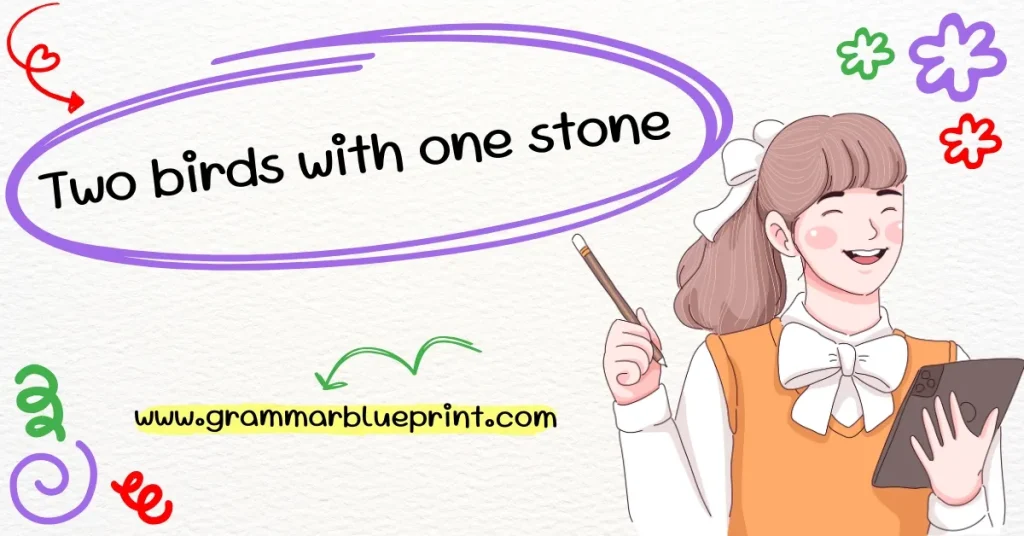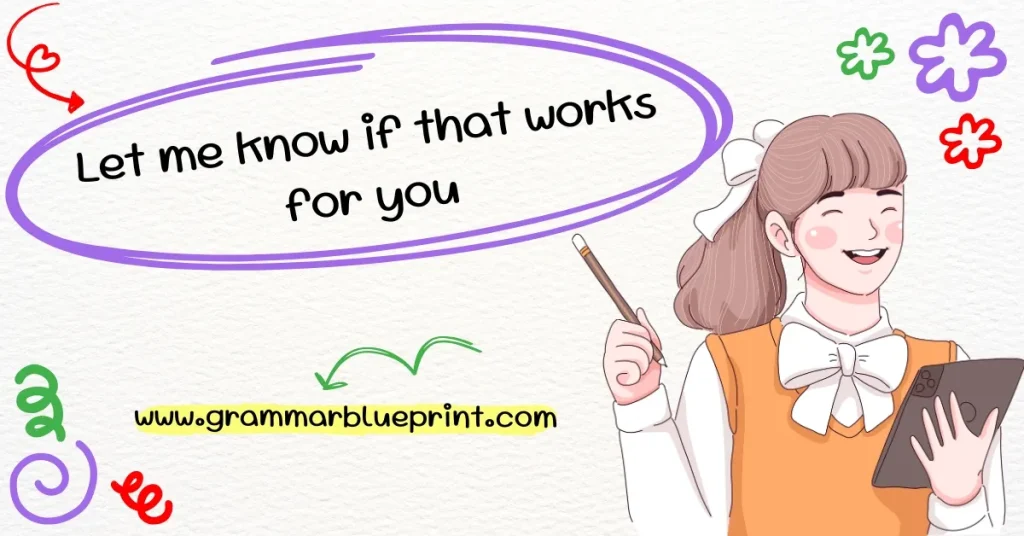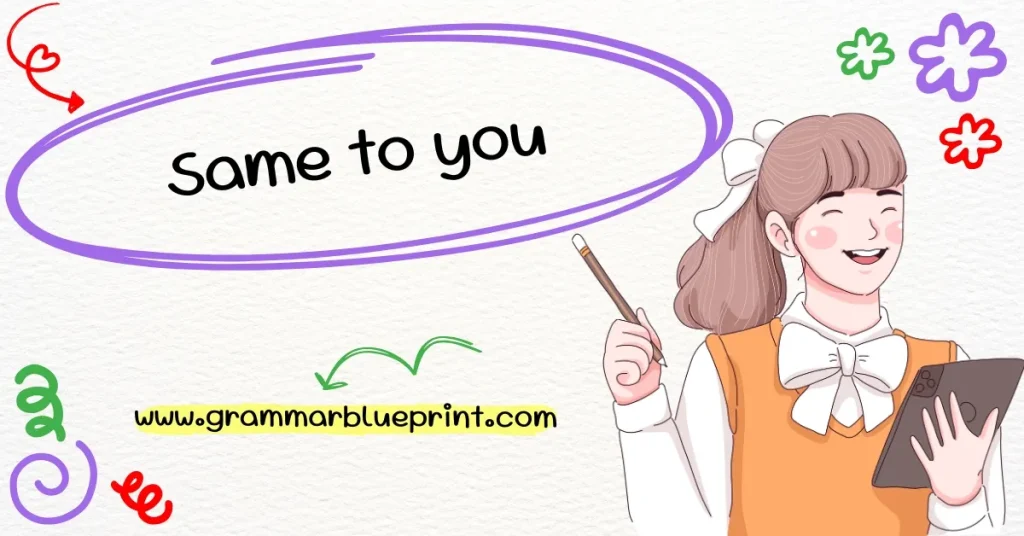In English, the idiom “Two birds with one stone” is commonly used to express the idea of accomplishing two goals with a single action. This idiom is useful for learners to understand because it highlights the beauty of efficiency and multitasking in communication. It helps you convey the idea of achieving more with less effort, a concept that can be applied both in everyday life and professional settings.
What is “Two Birds with One Stone”?
Definition and Origin
The phrase “Two birds with one stone” means to achieve two objectives with a single effort or action. This idiom has been used for centuries, and its origin can be traced back to the concept of using a stone to kill two birds, representing the act of achieving multiple goals efficiently.
How it’s Used in Everyday Conversation
In day-to-day conversations, the idiom is used to describe actions where you manage to solve two issues or achieve two outcomes with one effort. It reflects efficiency, a valuable trait in both personal and professional environments. For example, if you manage to work on two tasks at once, you might say, “I’m killing two birds with one stone by finishing my work while listening to a podcast.”
Common Situations to Use This Idiom
In the Workplace
In the workplace, this idiom is often used when a task leads to multiple benefits. For instance, if a manager implements a new process that not only saves time but also improves quality, they could say, “This new system is helping us kill two birds with one stone.”
In Daily Life
In daily life, you can use it when you manage to do two things simultaneously. For example, “I’m getting my exercise while listening to a lecture, killing two birds with one stone.”
In Education
Students often use this idiom when completing two tasks at once, like studying for an exam while doing their laundry. It helps show how they’re managing their time effectively. An example could be, “I’m reviewing my notes while on the bus, killing two birds with one stone.”
Benefits of Using Idioms like “Two Birds with One Stone”
Using idioms like “Two birds with one stone” enhances your communication skills by making your language more colorful and efficient. Idioms convey complex ideas in a concise and easy-to-understand way, making your speech sound more natural and fluent. They also reflect cultural nuances, allowing learners to better understand how native speakers use language creatively to convey multiple meanings in a single phrase.
How to Use “Two Birds with One Stone” in Sentences
In Statements
When making a statement, you can use this idiom to explain a situation where you achieve multiple outcomes. For example, “I finished my report and also helped my colleague, killing two birds with one stone.”
In Questions
You might also use this idiom to ask about someone’s ability to multitask. For example, “Did you manage to finish the presentation and organize the meeting, killing two birds with one stone?”
In Casual Conversations
In casual settings, you can use this idiom to describe everyday multitasking. For instance, “I’m going to the store and picking up a coffee, killing two birds with one stone.”
In Formal Communication
In formal settings, you can use this idiom to highlight efficiency or productivity. For example, “By adopting this new strategy, we’ll be able to address two critical issues, thus killing two birds with one stone.”
Better Alternatives to Say “Two Birds with One Stone”
While “Two birds with one stone” is widely used, there are many other phrases that can convey a similar meaning. Below are some of the most common alternatives and how to use them effectively.
Kill Two Birds with One Stone
Meaning: Accomplish two tasks at once.
Example: “I managed to finish my report and catch up on emails, killing two birds with one stone.”
Best Use: Commonly used in both informal and formal contexts.
Tone: Casual but effective.
Hit Two Targets with One Shot
Meaning: Achieve two goals with a single effort.
Example: “By working remotely, I can save time and money, hitting two targets with one shot.”
Best Use: When describing the efficiency of a single action.
Tone: Casual but impactful.
Get Two Things Done at Once
Meaning: Accomplish two objectives in a single action.
Example: “I’m going to prepare dinner and study at the same time, getting two things done at once.”
Best Use: Everyday use in informal settings.
Tone: Casual and straightforward.
Achieve Two Goals with One Effort
Meaning: Accomplish multiple objectives with minimal effort.
Example: “By taking this online course, I’ll gain new skills and network with professionals, achieving two goals with one effort.”
Best Use: In formal or professional contexts.
Tone: Professional and efficient.
Solve Two Problems with One Solution
Meaning: Address multiple issues with a single solution.
Example: “The new software will streamline our processes and improve productivity, solving two problems with one solution.”
Best Use: Business or professional scenarios.
Tone: Professional and effective.
Handle Two Tasks in One Go
Meaning: Complete multiple tasks simultaneously.
Example: “I’m going to take care of these emails and submit my report, handling two tasks in one go.”
Best Use: Informal settings.
Tone: Practical and casual.
Do Two Things at the Same Time
Meaning: Perform two activities simultaneously.
Example: “I’m going to walk the dog and listen to a podcast, doing two things at the same time.”
Best Use: Casual and everyday use.
Tone: Relaxed and conversational.
Multitask Effectively
Meaning: Successfully handle multiple tasks at once.
Example: “She can multitask effectively, answering calls and finishing reports in one go.”
Best Use: Workplace or productivity discussions.
Tone: Efficient and professional.
Get Double the Result
Meaning: Achieve twice the result with one action.
Example: “With this new strategy, we get double the result for half the effort.”
Best Use: In business or strategy-related discussions.
Tone: Professional and business-focused.
Knock Out Two Tasks at Once
Meaning: Complete two tasks simultaneously.
Example: “I’m going to finish this meeting and draft the agenda, knocking out two tasks at once.”
Best Use: Casual work-related conversations.
Tone: Practical and action-oriented.
Pull Off Two Objectives with One Move
Meaning: Successfully achieve two different goals with one effort.
Example: “By sending a follow-up email while preparing the presentation, I managed to pull off two objectives with one move.”
Best Use: Professional and productive environments.
Tone: Confident and effective.
Accomplish Two Things Simultaneously
Meaning: Complete two tasks at the same time.
Example: “I’m studying for my test and organizing my notes, accomplishing two things simultaneously.”
Best Use: Casual or academic settings.
Tone: Balanced and focused.
Get a Two-for-One Deal
Meaning: Receive two benefits or results from a single effort.
Example: “By attending the conference, I got a two-for-one deal: networking and learning.”
Best Use: Informal or light-hearted contexts.
Tone: Casual and playful.
Combine Two Solutions in One
Meaning: Use one solution to address multiple issues.
Example: “The new software combines two solutions in one, reducing both time and cost.”
Best Use: Business or technical discussions.
Tone: Efficient and professional.
Tackle Two Challenges in One Go
Meaning: Address two difficulties at the same time.
Example: “I decided to tackle two challenges in one go by managing both tasks during my lunch break.”
Best Use: Everyday work or task management.
Tone: Action-oriented and productive.
Reach Two Outcomes with a Single Action
Meaning: Achieve two different results with one effort.
Example: “By organizing this workshop, we can reach two outcomes with a single action—training and team-building.”
Best Use: Corporate or project planning.
Tone: Strategic and solution-driven.
Check Off Two Things from Your List at Once
Meaning: Complete two tasks at the same time, often from a to-do list.
Example: “I can check off two things from my list at once by answering emails while preparing for the meeting.”
Best Use: Informal work-related discussions.
Tone: Efficient and task-oriented.
Make a Two-Pronged Approach Work
Meaning: Use two different methods to achieve a common goal.
Example: “By applying a two-pronged approach, we can solve both the budget issue and the schedule delays at the same time.”
Best Use: Professional or strategic discussions.
Tone: Calculated and methodical.
Leverage One Action for Double Impact
Meaning: Use a single effort that yields two results.
Example: “By updating the website and launching the ad campaign together, we’re leveraging one action for double impact.”
Best Use: Marketing or project-based tasks.
Tone: Strategic and business-focused.
Do Two Things with a Single Effort
Meaning: Achieve multiple goals with one action.
Example: “I was able to do two things with a single effort by incorporating fitness into my commute.”
Best Use: Casual or personal productivity.
Tone: Practical and resourceful.
Get Two Results from One Action
Meaning: Accomplish two outcomes with a single move.
Example: “Sending out the newsletter got two results from one action: informing our customers and promoting our new product.”
Best Use: Marketing or business contexts.
Tone: Strategic and clear.
Complete Two Goals with One Task
Meaning: Finish two objectives using a single task.
Example: “By arranging a meeting and presenting the new proposal, I completed two goals with one task.”
Best Use: Professional settings.
Tone: Organized and efficient.
Address Two Issues with One Solution
Meaning: Solve two problems using a single approach.
Example: “This new policy will address two issues with one solution: cost and time efficiency.”
Best Use: Corporate or technical discussions.
Tone: Problem-solving and strategic.
Solve Two Problems at Once
Meaning: Tackle two issues simultaneously.
Example: “By automating the process, we solve two problems at once: reducing errors and speeding up production.”
Best Use: Business or operations.
Tone: Practical and solution-oriented.
Make the Most of One Move
Meaning: Achieve maximum benefit with a single action.
Example: “By consolidating these two meetings, I’m making the most of one move.”
Best Use: Time management or productivity.
Tone: Efficient and resourceful.
Work Two Angles with One Strategy
Meaning: Use a single approach to address two different angles or perspectives.
Example: “By focusing on both customer service and product innovation, we can work two angles with one strategy.”
Best Use: Strategic business planning.
Tone: Balanced and methodical.
Take Care of Two Things with One Job
Meaning: Complete two tasks with a single effort.
Example: “I took care of two things with one job by picking up groceries and dropping off the dry cleaning on my way home.”
Best Use: Personal time management.
Tone: Casual and efficient.
Hit Two Nails with One Hammer
Meaning: Accomplish two goals with one action.
Example: “We hit two nails with one hammer by organizing the team-building event and the client meeting in one session.”
Best Use: Business or strategic planning.
Tone: Focused and effective.
Knock Out Two Goals with One Action
Meaning: Complete two objectives with one effort.
Example: “I knocked out two goals with one action by preparing both the proposal and the report at the same time.”
Best Use: Professional tasks or work-related discussions.
Tone: Goal-oriented and practical.
Achieve Two Results with One Effort
Meaning: Get two different outcomes from one action.
Example: “By sending the email and preparing the presentation at once, I achieved two results with one effort.”
Best Use: Business, education, or multitasking situations.
Tone: Efficient and results-driven.
Why Use Idioms in English Communication?
Idioms like “Two birds with one stone” play an essential role in fluency because they help express complex ideas concisely. Idioms are an integral part of how native speakers communicate, and mastering them can improve your conversational skills. Using idioms effectively not only makes your language sound more natural but also demonstrates cultural understanding, as idioms often reflect societal values, humor, and everyday life. Understanding idioms can make you sound more fluent, confident, and approachable in both formal and informal settings.
Common Mistakes to Avoid with “Two Birds with One Stone”
Misuse or Confusion with Other Phrases
One common mistake learners make is confusing “Two birds with one stone” with similar phrases like “Killing two birds with one shot” or “Hitting two targets with one shot.” While these phrases have similar meanings, it’s important to use them in the appropriate context. For example, “hitting two targets with one shot” may sound more like an action plan or strategy, while “killing two birds with one stone” is often used in casual, everyday tasks.
Overuse of Idioms
Another common mistake is overusing idioms, which can make your speech sound unnatural. While idioms are helpful, using them excessively can make you sound like you’re trying too hard to fit in. It’s best to use them sparingly and in appropriate contexts.



